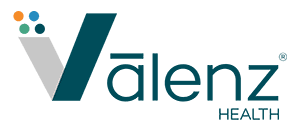Five Steps to a Successful Compliance Monitoring Program
Mitigating Risk and Liability with Assured Compliance
From healthcare providers to educators, vendors and contractors, verifying and reimbursing a sanctioned or unlicensed physician/provider for services can have dire consequences. Lost reimbursement dollars, sometimes with interest. Civil monetary penalties. Reputational setbacks. Legal liability and the devastating financial and personal costs associated with litigious actions in cases of low-quality care and poor health outcomes. How can your organization’s compliance management program safeguard against all these risks?
The answer is to screen every physician and medical provider for exclusions, lapsed licenses and other disciplinary measures across all necessary sanction and licensure lists every month. Whether you are looking to outsource to an exclusion and sanction screen service like EPStaffCheck™ or committed to managing in house, here are five critical success factors for every compliance monitoring program.
1. Searching the major federal, state and independent lists is necessary, but not nearly enough.
Your team checks Office of Inspector General List of Excluded Individual/Entities (OIG LEIE), System for Award Management (SAM, formerly an EPLS search), Medicare Exclusions, Medicaid Sanctions – but are they drilling further? There are dozens of additional federal and national sources to check, including the Social Security Death Master File (SSDMF search, also known as an SSDI search), National Practitioner Data Bank (NPDB), the CMS Preclusion List, the Specially Designated Nationals And Blocked Persons List (SDN List) from the Office of Foreign Assets Control (OFAC), to name just a few. Each state has several additional lists – some down to the county level. It is critical to check lists in all the state(s) your organization is in as well as all pipeline areas, meaning bordering states and any other states where the individual being screened may have worked or practiced previously.
2. Healthcare provider searches must cast a wide net, not a single line.
Invest in the right tools to ensure you are served all possible matches with every query. Go beyond an NPPES-NPI provider registry lookup – check the name, including nicknames, maiden names, spelling variations and common misspellings. It also helps to expand the date of birth beyond the precise date provided. It is better for your business to filter from many possible matches than to verify someone you shouldn’t because the search was just too narrow. By the same token, you’ll also want the ability to maintain an audit-ready Cleared Records library, which saves time each month by removing results that were previously determined as inaccurate matches for each individual.
3. Licenses should be checked as frequently as sanctions.
Fraud is an ongoing threat, but often licenses lapse where no foul play is involved. Healthcare providers are busy professionals with many demands – as a result, they may unintentionally overlook their fee or CEU deadlines, causing a suspended license. Checking once a year means you often won’t know about a lapse until it is too late. It is important to catch issues as early as possible because the ramifications in terms of reimbursement dollars and potential penalties can be severe. Checking monthly allows for timely notifications and, for healthcare organizations, it allows the ability to prevent lapses by communicating with the provider in advance of a pending expiration.
4. Maintaining compliance means screening your vendors, too.
OIG guidelines state that your team should be check eligibility for vendors and contractors, which means screening outside the healthcare realm. Check all vendors against SAM for assurance your organization does not hire or pay anyone excluded by non-healthcare government agencies, such as the Department of Justice, Environmental Protection Agency, Department of Education and many more. If your vendor search yields a potential issue, contact your legal department and the sanctioning agency to see whether you are impacted and/or what actions must be taken for the vendor to achieve eligibility.
5. It’s not enough to have the right processes in place – you need the right people as well. You can have all the right tools, processes and software, but if you don’t have the right people on task, issues will fall through the cracks. For reasons ranging from time constraints to complacency to ineptitude, real-world compliance audits have uncovered many instances of employees verifying names without proper vetting. The best way to avoid personnel deficiencies is to outsource to a dedicated team.
The risks of noncompliance are too great to leave to chance. To comprehensively reduce exposure, your compliance team must be ever-vigilant and thorough, and your compliance management program must be OIG audit-ready at all times.
For more information on ensuring your team searches all necessary sources for fully minimized risk and exposure, read The Complexity of Compliance Monitoring: Covering All Your Databases.
The Benefits of EPStaffCheck™
Brought to you by Vālenz® Health
With daily updates to all sources, the ability to build any list into the platform, audit-ready reporting, and a dedicated content team that gathers data to support thousands of changes per week, Valenz provides the industry’s most dependable and accurate compliance monitoring solutions. To learn how you can protect your organization from the risks of non-compliance with Valenz, call (888) 395-9029.





